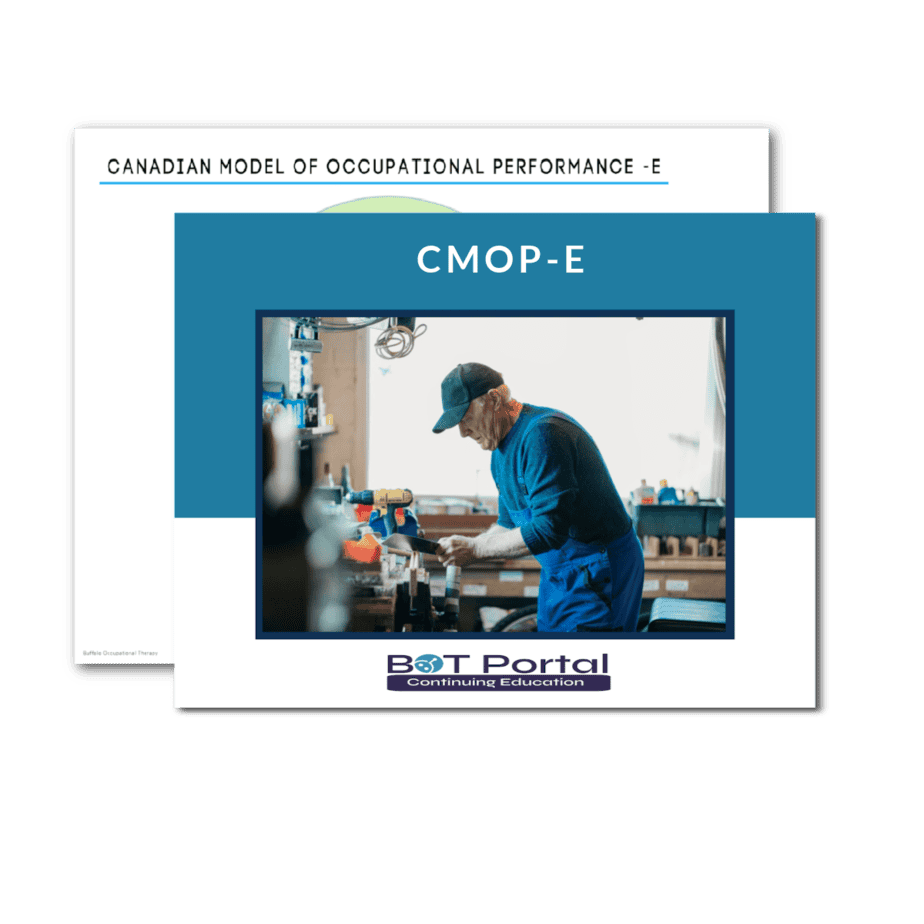Description
Canadian Model of Occupational Performance
The Importance of CMOP in Rehabilitation
The Canadian Model of Occupational Performance (CMOP) is a widely recognized framework utilized in occupational therapy for the rehabilitation and empowerment of individuals with various challenges, disabilities, or injuries. Developed by Polatajko, Townsend, and Craik in 1990, it emphasizes the significance of occupation in an individual’s life and focuses on enabling participation in meaningful activities to enhance overall well-being.
At its core, the Canadian Model of Occupational Performance views occupation as dynamic and multifaceted, encompassing activities of daily living, work, leisure, and self-care. Unlike traditional medical models, which may primarily focus on impairments or deficits, the CMOP considers the interaction between the individual, their environment, and the occupations they engage in. This holistic approach is crucial in rehabilitation as it acknowledges that a person’s ability to engage in meaningful activities is influenced by various factors such as physical, cognitive, emotional, social, and environmental aspects.
One key aspect of the CMOP is its client-centered approach. By actively involving clients in the rehabilitation process, therapists gain insights into their values, interests, priorities, and goals. This collaborative approach fosters a sense of empowerment and ownership over the rehabilitation journey, leading to more effective outcomes. Additionally, by considering the unique context and circumstances of each individual, interventions can be tailored to better address their specific needs and circumstances.
Furthermore, the Canadian Model of Occupational Performance emphasizes the importance of considering the environmental context in which individuals participate in occupations. This includes physical environments, such as home or work settings, as well as social and cultural factors that may influence participation. By addressing environmental barriers and facilitating supportive contexts, therapists can help individuals maximize their ability to engage in meaningful activities and achieve their goals.
Another strength of the Canadian Model of Occupational Performance lies in its flexibility and applicability across various populations and settings. Whether working with individuals recovering from physical injuries, managing chronic conditions, or addressing mental health challenges, the principles of the CMOP can be adapted to meet diverse rehabilitation needs. Moreover, its holistic nature aligns well with the evolving understanding of health and well-being, emphasizing the importance of not just treating symptoms but enhancing overall quality of life.
The Canadian Model of Occupational Performance plays a pivotal role in rehabilitation by promoting a holistic, client-centered approach that emphasizes the significance of meaningful activities and the dynamic interaction between individuals and their environment. By empowering individuals to engage in occupations that are meaningful to them and addressing environmental factors that may influence participation, the CMOP helps facilitate optimal rehabilitation outcomes and improve overall well-being.




